Most Common Pests In Cannabis: Aphids

- 1. What are aphids?
- 2. What do aphids look like?
- 3. Aphids life cycle
- 4. Where are they found?
- 5. What do aphids do?
- 6. Symptoms
- 7. How to prevent them?
- 8. How to deal with aphids?
- 9. In conclusion
Although aphids consume nutrients from your plants, that is not the only reason they are a problem, they also carry viruses and may infect your plants when they feed on them. These viruses can stunt growth and flower production, some aphids even carry diseases that can ultimately kill your plant if left untreated. Pests are part and parcel of growing cannabis, especially if you prefer to raise your cannabinoid-containing plants (aka feminized seeds) outside. This fact has made insects quite unpopular among weed cultivators. However, they don’t all fall into the same category. You see, many insects actually play a fundamental role within garden ecosystems.
They help to pollinate plants, prey on pest species, and even cycle nutrients. With that said, many insect species have an appetite for plant tissues and happily sink their mouthparts into weed leaves and stems in order to acquire the nutrients they need to survive. The damage these pests inflict depends on how quickly they build their numbers, and how long they’re allowed to hang around and cause an issue. Among all of the pest species out there, aphids rank as one of the most problematic to cannabis users. Their raging appetites, combined with their ability to reproduce rapidly, make them a feared adversary in the garden.
1. What Are Aphids?
Aphids are parasites within the order of Hemiptera. Like many other insects, they can be a serious pest in many plants and can also carry several viruses and diseases.
2. What Do Aphids Look Like?
These bugs are soft and may appear white, green, yellow, black, brown, and red, depending on their stage of life. They can be found all over the world and their color changes depending on where you live.
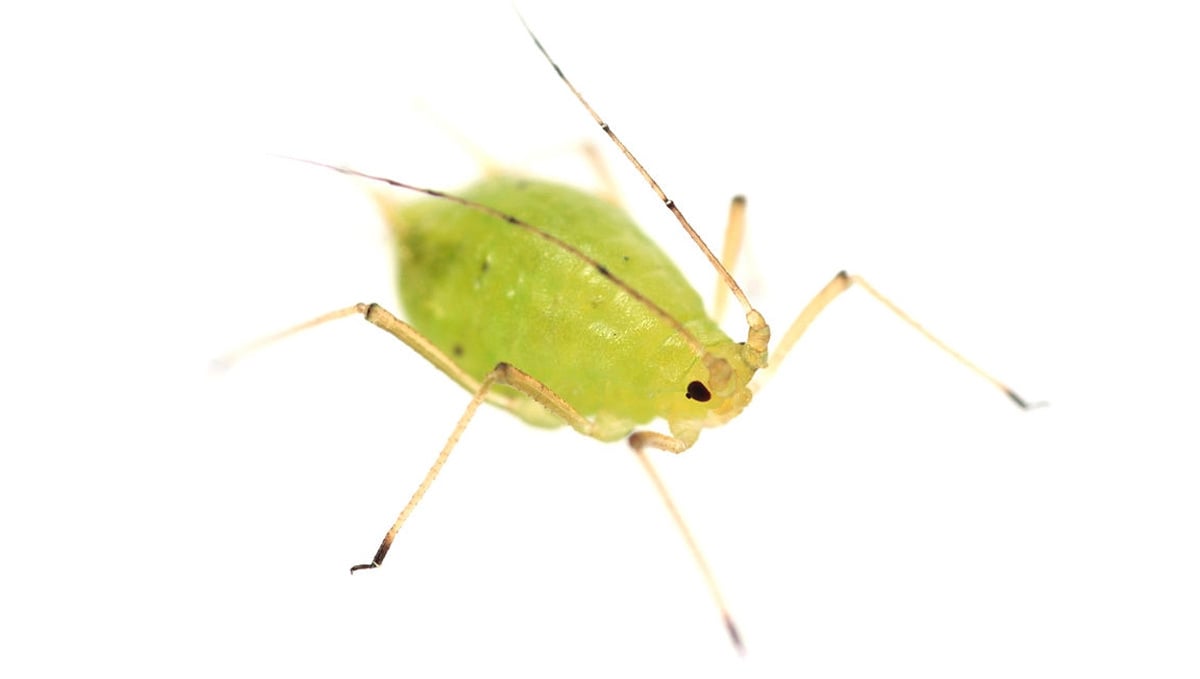
Aphids look very different depending on their stage of life. The bigger ones are adults, they usually are oval-shaped and can even have wings or antennae, while the younger ones are long, thin, and usually white.
3. Aphids Life Cycle
Aphids grow very fast and can have many generations per year. Nymphs (young aphids) molt and shed their skin up to four times before becoming adults, unlike other bugs, there is no pupal stage. In mild climates, aphids reproduce throughout the year and adult females can give birth up to 12 times a day. In colder climates, or during winter, aphids reproduce sexually and lay eggs on perennial plants to survive winter. And in warm weather or summer, it’s when aphids grow the fastest, developing from newborn nymphs to adults in as little as 7 days. Each adult apid can give birth to 80 nymphs in one week, this is why aphid infestations need to be dealt with quickly!
Winged and Wingless Aphids
Some aphids have wings but others don’t. But why? Well, most species of aphids do not develop wings until a couple of generations. This happens because the first generation (or first couple of generations) of aphids born from eggs laid in winter are wingless but, after many generations pass, the host plant (where aphids live) could be lacking space so this triggers a generation of winged aphids so that they can migrate to other host plants.
4. Where Are They Found?
Aphids prefer the stems and undersides of leaves. Some species are easy to spot because their color stands out from the plant (like the black ones).
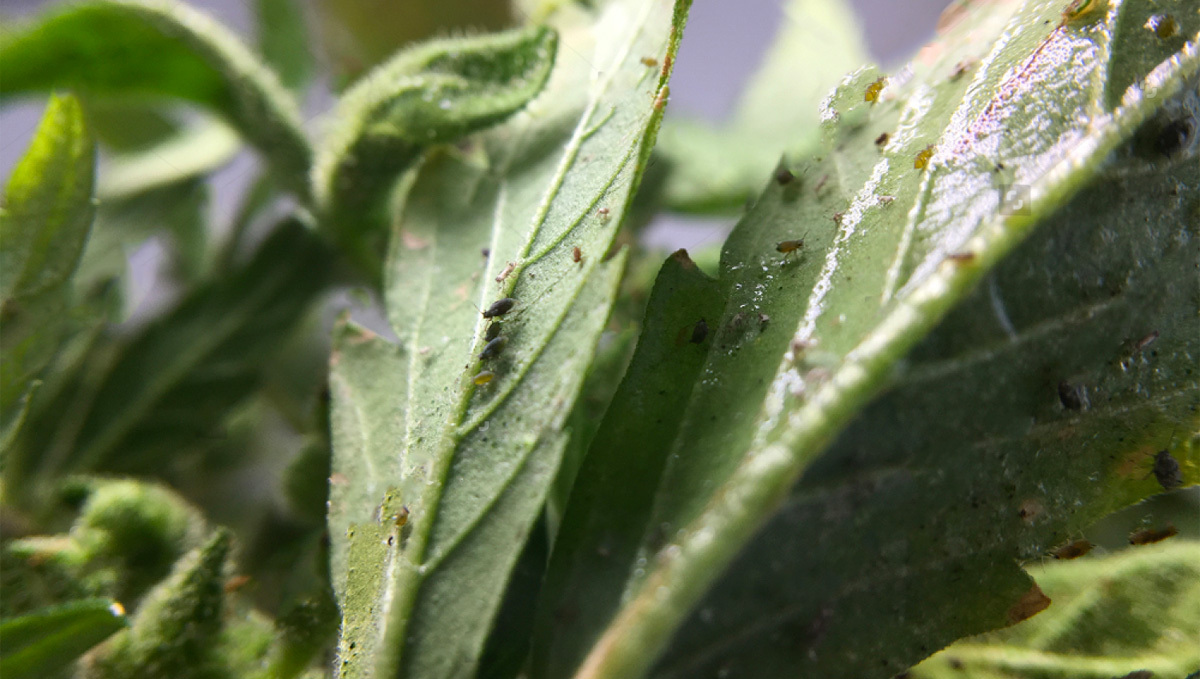
Others are often colored green and camouflage in with leaves which makes it very difficult to spot their infestation on time.
5. What Do Aphids Do?
Aphids use their tiny mouths to make a hole on leaves and suck the nutrients out of the branches, stems, and leaves in order to get food to be able to reproduce. When they eat too much, they excrete honey-dew (sugary water). This attracts ants and other bugs and also can have fungus growing in it.
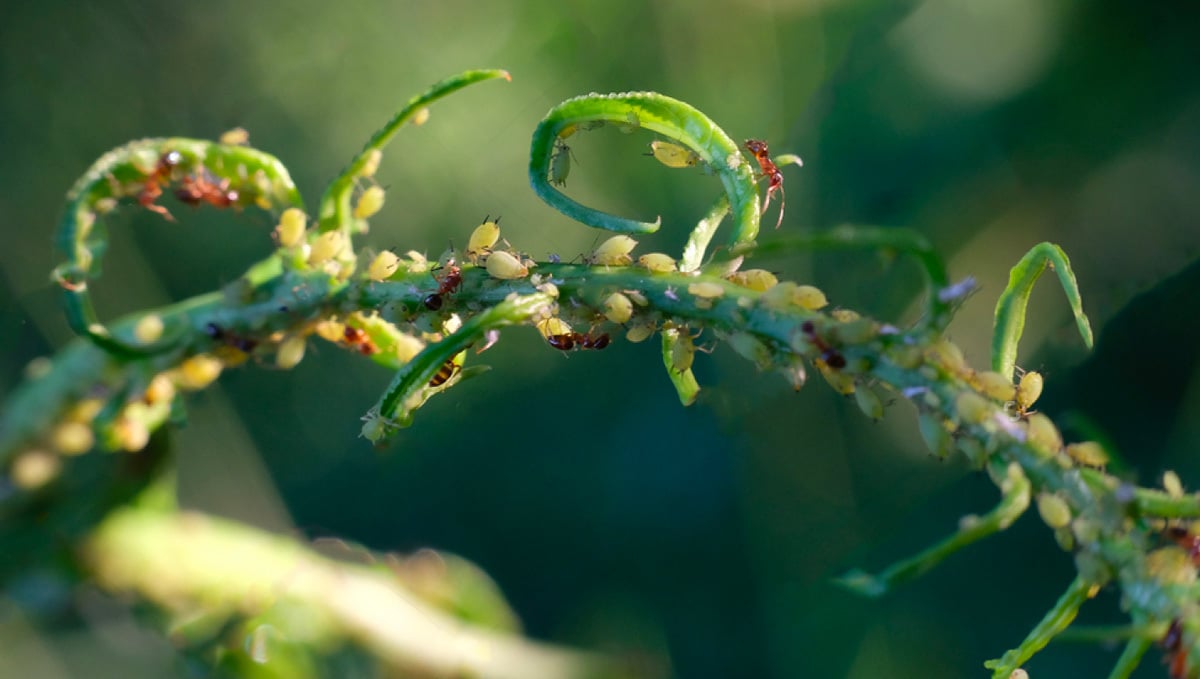
If you have a serious infestation, the aphids will cause leaves to curl and wilt, resulting in slow growth and affecting flower production. You will see an overall slow down of plant growth. Aphids also carry diseases that can quickly infect other plants in your grow space, they can easily go from plant to plant, biting plants and infecting them with the viruses and bacteria they carry.
6. Symptoms
When infected with aphids, your plant will not show symptoms until it is already too far into and not able to be saved anymore.
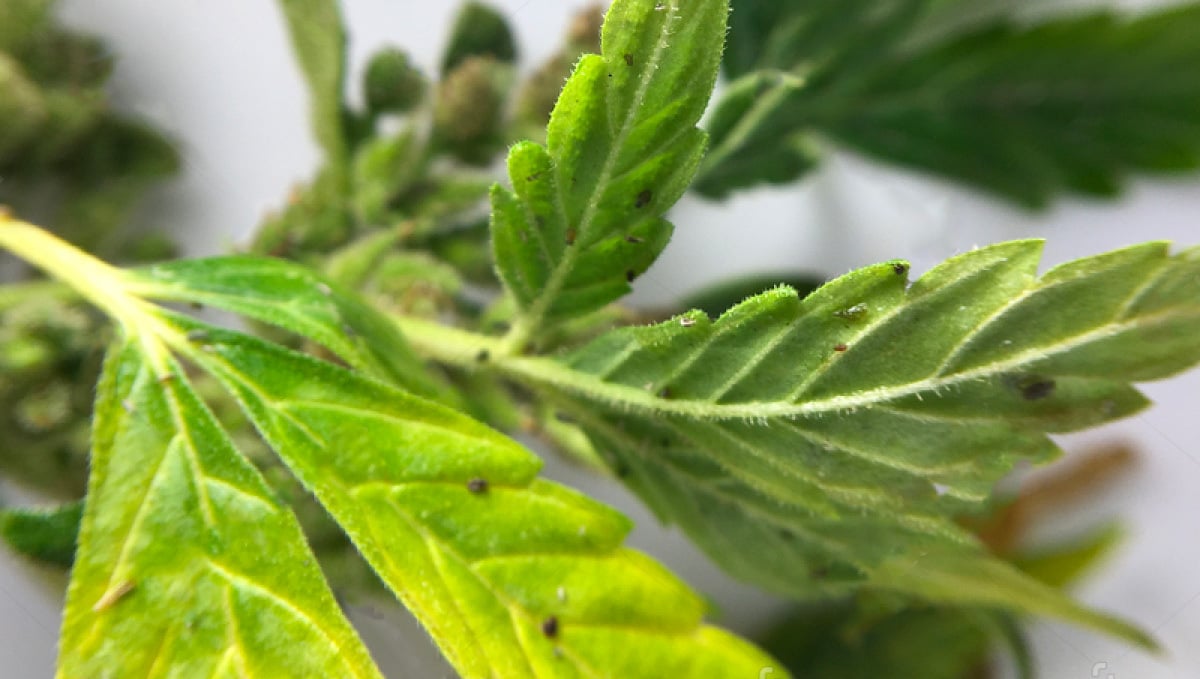
The only “symptom” you will see is the small black, white, or green aphids attached to the underside of the leaves or branches. Even if there are a couple, you should already start worrying.
7. How To Prevent Them?
There are only a couple of ways to prevent aphids. The first one is having good air filtration, aphids fly for part of their life cycle, and using a mesh or filter to keep them out of your grow space is a good way to prevent them.

The other way is by monitoring your plants closely. Aphids are really small at first and it is really hard to spot them from afar. To prevent them, check the plants regularly (at least twice a week), especially in the vegetative phase when the plants are growing a lot. Inspect the undersides of the leaves and branches, spotting them early is the way to go. Once the number of aphids is high, it may be too late to do anything.
8. How To Deal With Aphids?
Many growers panic at the sight of aphids. This strong emotional reaction leads them to take extreme measures in the spur of the moment. Unfortunately, this often involves harsh and toxic chemicals. While effective, these products cause multiple issues. Firstly, they wind up in the immediate environment, where they can harm the soil food web organisms that work hard to maintain fertility in the soil. Next, they can also leach out into the wider environment. Of course, they can also leave residues on weed flowers, which can decrease the quality of the end product and potentially harm those using them. Thankfully, there are natural and organic options that work great at dealing with aphid infestations.
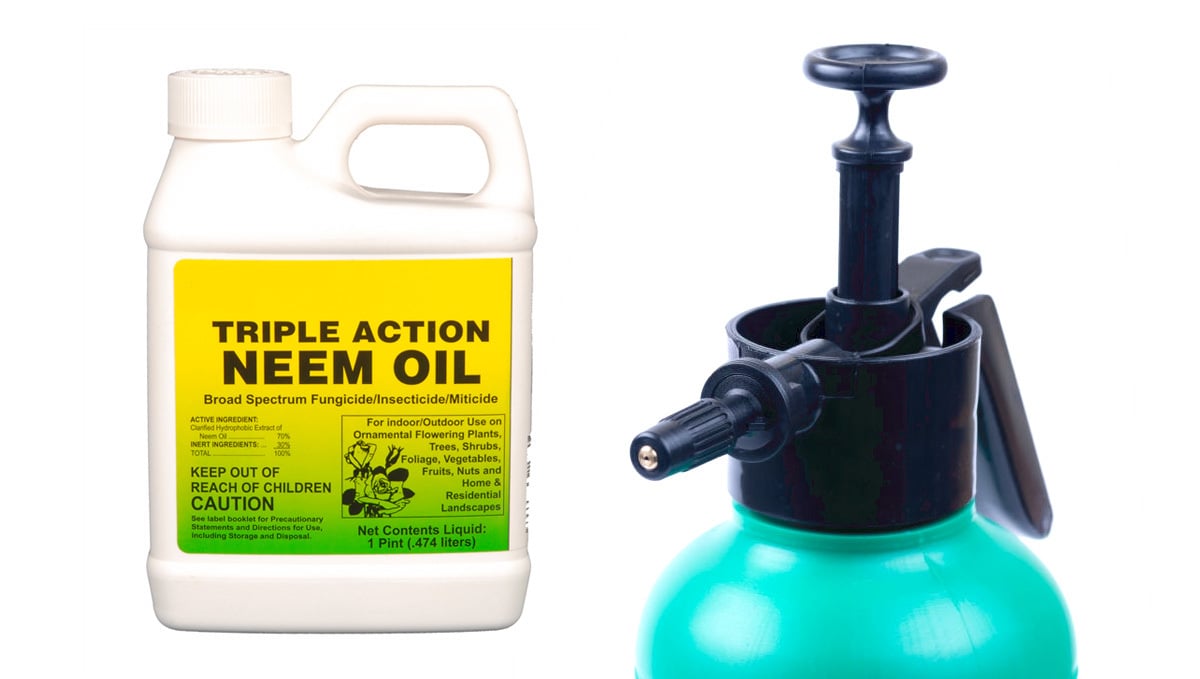
If you failed to check regularly for them, there are a couple of ways to try and eliminate them. Depending on the gravity, you may want to take your plants outside (if you grow indoors) and use a high-pressure sprayer to remove the excess aphids, after removing some of the aphids with a sprayer, remove the leaves and buds that are already compromised. Once you’ve taken care of the more affected parts, you will need to use an insecticide. We recommend using Neem Oil during the vegetative stage and a natural or organic (safe for plants and humans) insecticide during the flowering stage.
Neem Oil has a really strong and unpleasant smell, because of this, it is advised to be used during the vegetative stage. If used on buds the smell may stay on the flowers and will produce a super harsh and disgusting flavor. Some even say it is toxic to smoke buds with neem oil.
9. In Conclusion
Aphids are one of the most common and hard to deal pests in cannabis. Their small size makes them hard to spot and you will only see your plant yellowing when it is too late to be saved. The best way to avoid them is to keep your grow space clean and always be on the lookout, not only for aphids but for any kind of bug.








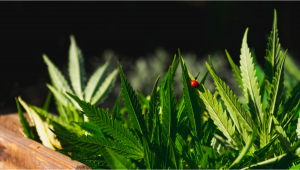
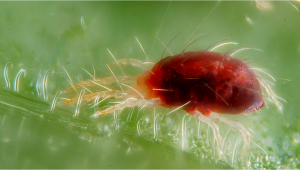

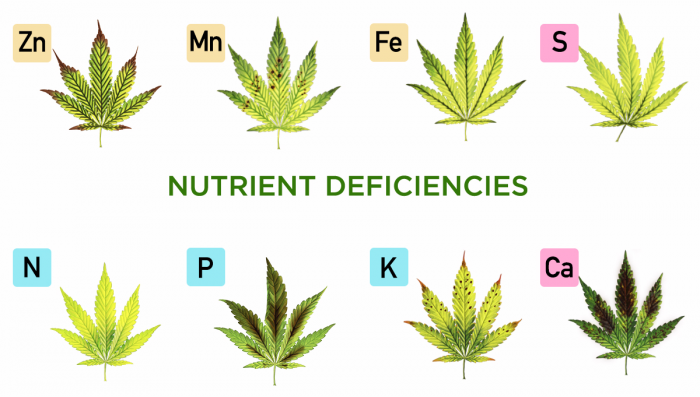
Comments